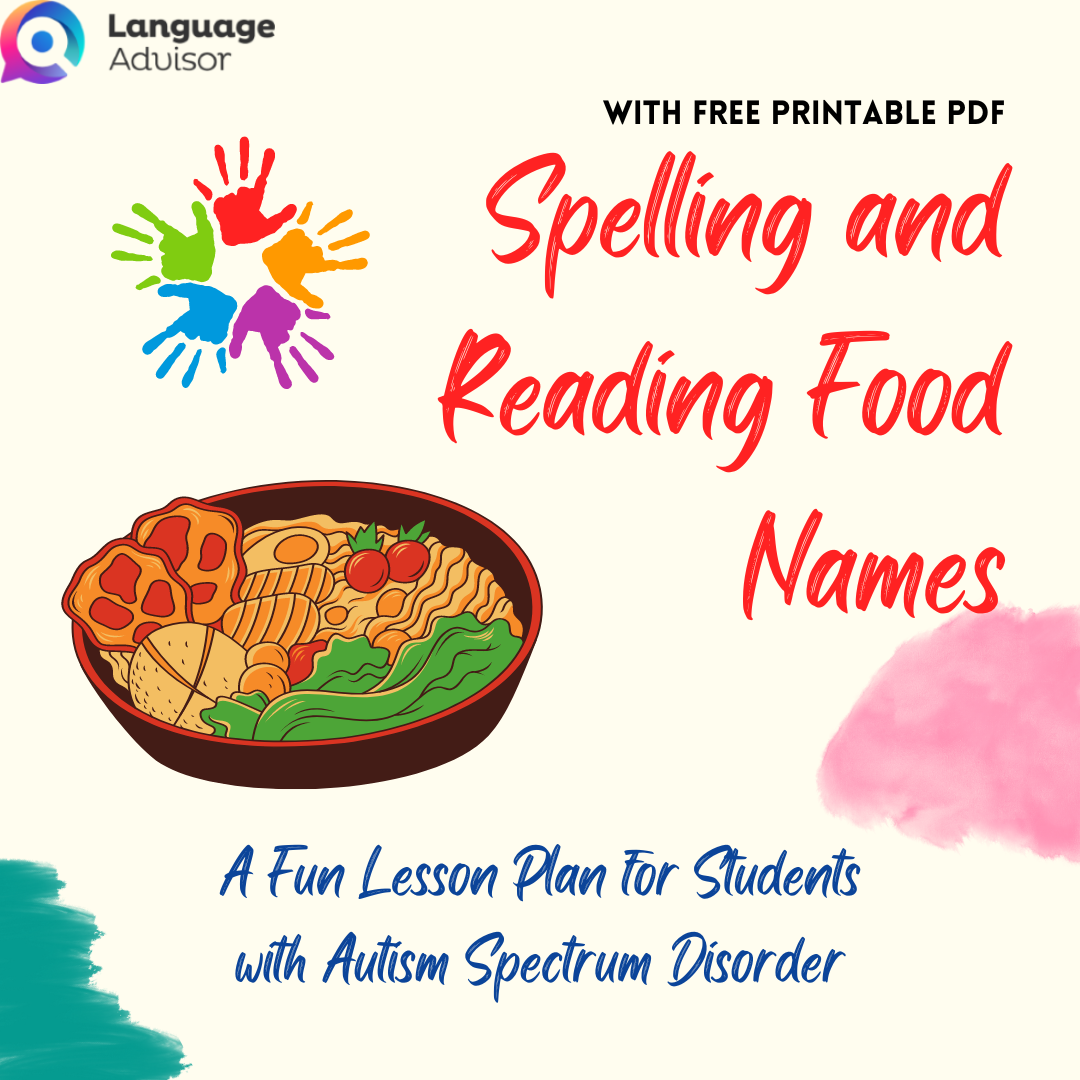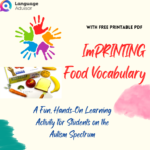Spelling and Reading Food Names: A Fun Lesson Plan for Students with Autism Spectrum Disorder (With Free Printable PDFs)
Spelling and Reading Food Names

Spelling and Reading Food Names
In this lesson, students will practice reading and spelling food names through movement-based activities. Designed for students on the autism spectrum, the activities promote interactive learning while reinforcing key vocabulary. The game is flexible and can be adapted for various group sizes and skill levels.
Objective:
- Practice reading and spelling food names using hands-on and movement-based activities.
Skills Practiced:
- Reading
- Spelling
- Recognizing food names
Materials:
- Stages Learning Food Carpet Squares
- Index cards or slips of paper (one letter per card)
- Envelopes (one per food name)
- Kid-friendly music (optional)
Set-Up:
- Prepare index cards or slips of paper with one letter per card for each food name on the food carpet squares.
- Place the letters for each food name into individual envelopes. One envelope should correspond to each carpet square.
- Distribute the envelopes and matching carpet squares to each student’s desk.
Procedures:
1. Warm-Up:
- Begin by familiarizing students with the food names.
- Have each student hold up their carpet square while the rest of the class says the name of the food together.
- Quiz students by asking them to identify the starting or ending letter of each food name for added practice.
2. Spelling Activity:
- Once students are comfortable with the food names, have them open their envelopes and carefully dump out the letters.
- Students should unscramble the letters to spell the correct name of the food on their carpet square.
- To make the activity more fun, play music during the unscrambling process, and pause the music to signal the end of each round.
3. Letter Scramble and Movement:
- After the words are spelled correctly, students scramble the letters again.
- Once scrambled, have each student move to the next desk (for example, shift one seat to the right) and repeat the unscrambling activity with a new food name.
- Continue this process until all students have had a chance to spell all the food names.
Variations:
- Assisted Spelling:
- For students struggling to spell independently, you can write the food name on the envelope. Students can then practice matching the letters to the written name.
- Checker Role:
- Have half the group unscramble the food names, and the other half act as “checkers.” The checkers will have a list of correctly spelled food names and will check that each food name is spelled correctly after each round.
- Focus on Reading:
- For reading practice instead of spelling, create enough flashcards with food names. During each round, have students match the correct food name to the carpet square instead of unscrambling letters.
- Competitive Version:
- For a more competitive game, split the class into two teams. Line up the desks in a row and have each student take turns unscrambling the letters at each desk. The first team to correctly spell all the food names wins.
People:
This activity works for small groups or a larger classroom setting, making it flexible for one-on-one instruction or group play.
Wrap-Up:
After completing the activity, reinforce learning by reviewing the correct food names once again. You can also encourage students to share their favorite food from the lesson. This fun, movement-based approach makes spelling and reading food names an interactive experience, ideal for students with autism spectrum disorder.
Don’t forget to download the free printable PDFs to complement this lesson and bring extra engagement to your classroom!

DOWNLOAD THE PDF FOR FREE





